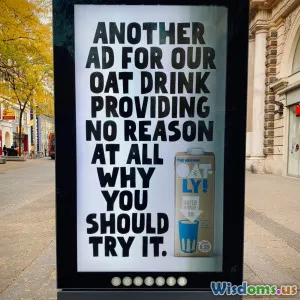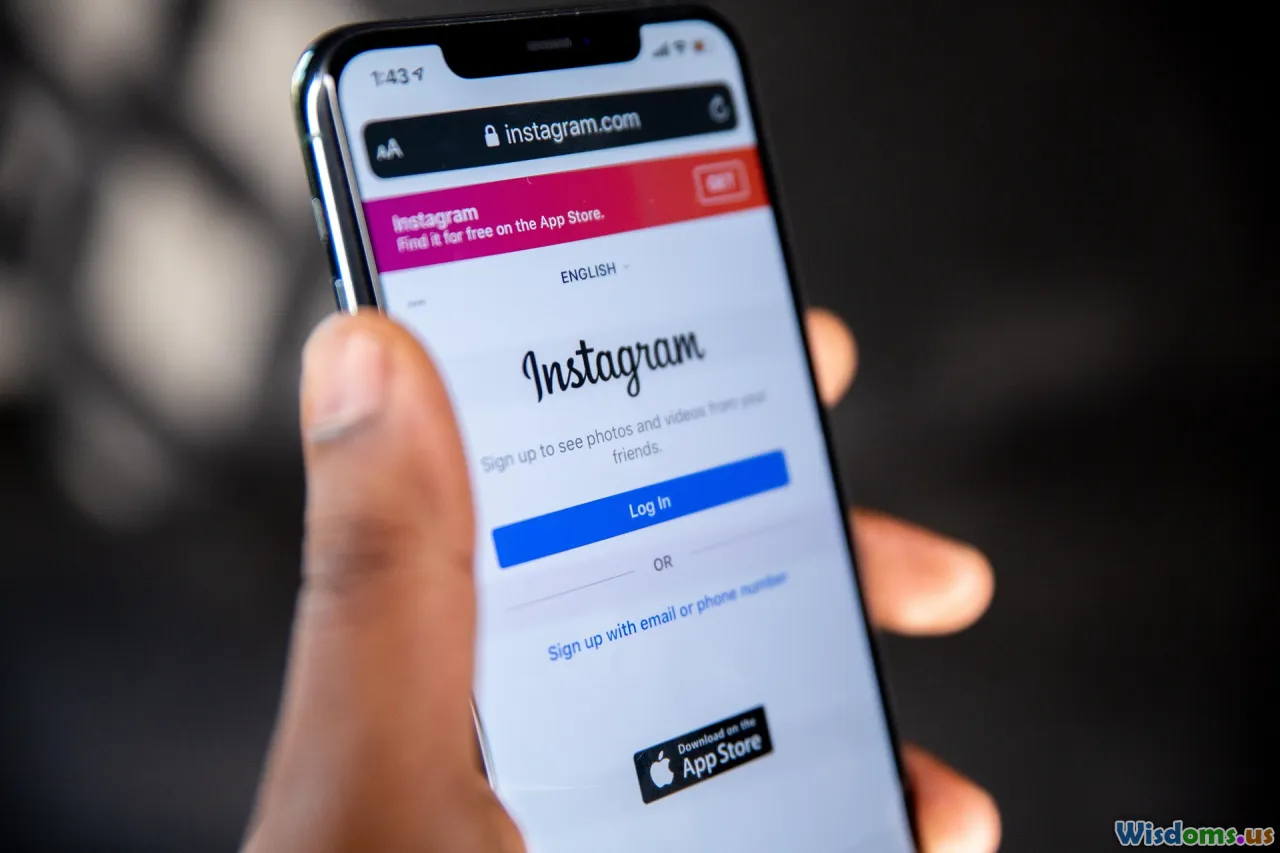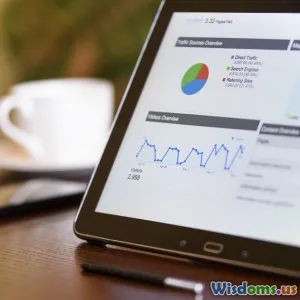
Why Your Banner Ads Fail Secrets Marketers Ignore
13 min read Uncover overlooked reasons behind ineffective banner ads and learn actionable strategies to boost ad performance. (0 Reviews)
Why Your Banner Ads Fail: Secrets Marketers Ignore
Banner advertising is everywhere—websites burst with flashy rectangles promising deals, clicks, and conversions. But here’s a harsh reality: the vast majority of banner ads fail miserably. Despite the technologies, targeting options, and creative resources available today, most campaigns underperform. The reasons for this are not always what ad tech platforms and blog posts tell you. There are deeper, often ignored factors that separate winners from failures in banner advertising.
Let’s dig into the underrated secrets of failed banner ads—and what savvy marketers do differently.
The Illusion of Creativity

Creativity matters. Everyone knows this. But what passes as “creative” in boardrooms often isn’t effective online. Brands love sleek aesthetics, clever taglines, and award-bait campaigns. But most award-winning ads don’t win hearts or wallets on the web. Why?
Overly Polished Designs Miss the Point
A/B testing by ConversionXL found that often, basic or even "ugly" banner ads outperform visually stunning ones. The reason is simple: over-designed banners may blend into a webpage or look like native site elements, causing viewers to ignore them. In contrast, ads with unexpected contrast or "raw" elements jar the user into attention.
Example: A SaaS company tested a beautiful, minimalistic ad for their product featuring soft gradients and subtle text—but their higher-converting ad was a garish orange block with a direct “Get 25% Off” message.
Unclear Messaging
Another pitfall is prioritizing cleverness over clarity. Too many marketers aim to dazzle rather than to actually inform users. Banners must communicate value instantly, before a user scrolls past. If your banner needs more than two seconds to understand—or if your call to action (CTA) is hidden in snazzy copy—it’s doomed.
Actionable tip:
- Use a dead-simple test: Find someone unfamiliar with your offer, flash the ad for two seconds, and ask, “What do you think this is for?” If they hesitate, simplify your message.
Banner Blindness: More Than a Buzzword

Banner blindness is real, but many marketers misunderstand its depth. It’s not just that users "ignore ads"; they’ve subconsciously trained their eyes to filter out anything resembling typical banner placements or visual styles.
F-Pattern Scanning
Heatmap analyses from Nielsen Norman Group show users scan webpages in an F-shaped pattern. Ads outside these focus areas—or ones using standard shapes and sizes that teleport the brain to "ad-land"—are summarily ignored. This psychological filtering develops over years of net surfing.
Example: A B2B brand ran an ad in the top sidebar, the most common spot. The results were dismal. Moving the ad in-line with editorial content tripled click-through rates—even with the same design and copy—simply because it escaped default "ad" expectations.
Repetition Without Relevance
Frequency caps and retargeting sound effective, but repeatedly showing the same banner without relevance fatigues users. The more often people see an untailored ad, the more likely they are to tune out all similar banners altogether.
Insider tip:
- Rotate banner designs and messages rapidly, and use dynamic creative optimization (DCO) for precise, audience-driven versions. Experiment with unconventional sizes and unusual placements.
Metrics That Don’t Matter (and Those That Do)

Counting clicks and impressions isn’t enough—but many agencies still optimize on CTR alone. This is a grave mistake that leads to superficial wins and deeper losses.
Clicks Are Not Conversions
It’s possible to get thousands of clicks without a single meaningful action, especially if your banner is misleading, clickbaity, or irrelevant. Furthermore, accidental touches on mobile devices inflate the numbers while driving no value.
Better metric: Focus on post-click actions: signups, purchases, or time spent on landing pages. Attribution tools measure not just visits, but the real journey from banner to business result.
Meaningless Brand Impressions
High impression counts can look impressive—until you realize they’re mostly wasted on inattentive users, bot traffic, or viewers outside your target demographic.
Actionable tip:
- Use viewability metrics (did humans actually see the ad for more than 1 second?) and layer on demographic or behavioral data to judge effectiveness.
- Tools like DoubleVerify or IAS can filter out non-human or low-quality impressions.
The Forgotten Science of Landing Pages

Many banner ad failures trace back to a bad handoff. Even if your banners grab attention, most users bounce if the landing page doesn’t deliver on the promise, loads slowly, or is visually inconsistent.
Consistency and Congruence
Harvard Business Review notes that "message congruence"—the match between ad and landing page—is vital in digital response. Users get confused or suspicious if you bait them with a sale and drop them on your generic homepage.
Example: A financial firm increased applications by 42% simply by ensuring the headline, font, and call-to-action color perfectly matched the original banner.
Friction Kills Conversions
Excessive form fields, pop-ups, or unexpected paywalls repel users. A study by Unbounce found reducing signup steps from five to two boosted conversions by 70% for ecommerce banners.
Insider advice:
- Test your funnel from ad click to conversion monthly. Remove unnecessary obstacles and distractions at every stage.
Targeting Beyond Demographics

Highly targeted campaigns should work wonders—yet many fail to outperform broad-target blasts. Why?
Behavioral and Intent Targeting Trumps Age & Gender
The richest targeting is based on behaviors and timely intent signals, not just static categories like "18-34, male." Google’s Display Network can segment audiences by what they’ve recently searched or sites they’ve visited.
Example:
- A travel agency’s banners targeting "recent homebuyers" with "honeymoon deals" earned twice the ROI of their generic "vacation" banner targeted by age bracket.
Contextual Alignment
Banner campaigns soar when the ad content aligns with the destination page’s theme. Displaying bike insurance banners on cycling blogs hugely outperforms the same banner on general news sites.
Pro tip:
- Use tools like GumGum or Integral Ad Science to deploy banners at the perfect contextual moment—when your message reinforces, rather than interrupts, what the user is already focusing on.
Forgetting Mobile Realities

The world is mobile-first. Over half of web traffic is mobile, but banners optimized for desktop still flood the web.
Thumb Zone Awareness
Successful mobile banners account for "thumb zones" (the most accessible spots while holding a phone vertically). Banners awkwardly placed or loaded with tiny text miss engagement entirely.
Example: A gaming firm tripled its install rate by moving the CTA to the lower third of a sticky footer and raising font size by 25%—all to suit one-hand smartphone browsing.
Mobile File Sizes Matter
Slow-loading ads are death on mobile. Google penalizes slow sites, and users bounce quickly. According to Think With Google, reducing media weight from 400KB to 100KB can improve engagement by 50% on slow connections.
Actionable tip:
- Use image compression and avoid cluttered visuals. Test your banner’s load time on older, slower devices—not just the latest iPhone or Android flagship.
Ignoring Emotional Triggers

Even in B2B, humans make emotional decisions. But most banner ads cling to dry offers and rational pitches (“Save 10%”). Emotional triggers—excitement, curiosity, or fear of missing out—drive better responses.
Power Words and Psychological Hooks
Experiment with urgent wording (“Only 3 Days Left!”) or social proof (“Join 100,000 savvy readers”). In a BannerFlow study, ads featuring words like “instantly,” “free,” and “exclusive” lifted CTR by up to 23%.
Visual Cues That Connect
Faces, genuine photos, or product-in-use visuals evoke empathy and interest. Static, sterile graphics rarely connect at a human level.
Example:
- Insurance ads that swap generic icons for real customer photos and micro-reviews see higher user trust and interaction, according to research by AdEspresso.
The Data Disconnect: Failure to Iterate

Big ad budgets often drive a set-it-and-forget-it approach. But high-performing marketers are obsessive about ongoing tuning.
Learning From Every Impression
A/B tests should be perpetual—not one-off events. Landing page tweaks, CTA copy changes, new color schemes: data from these mini-experiments builds compound gains over time.
Example:
- A fintech startup ran 10 banner variants per month, analyzing every metric. Their best-performing variant was discovered after eight previous iterations failed.
Agile Creative Teams
Successful teams break the silos between design, data, and copy. Weekly scrums to debrief what’s working (and what isn’t) create a faster cycle—letting you capitalize on winning formulas before they grow stale.
Pro tip:
- Create a feedback loop between your analytics team and creatives. Rotate banners weekly, not quarterly. Even small changes in headline or color can have dramatic impact.
Banner advertising’s usual culprits (bad creative, poor placement, targeting mishaps) mask more nuanced, often ignored reality: the landscape moves fast, but user psychology, mobile dynamics, and authentic emotion still determine what cuts through. The secret? Treat every detail—design, data, placement, copy—as a living experiment, and never stop refining. Only then will your banners defy the alarming averages and deliver the ROI everyone else is missing.
Rate the Post
User Reviews
Popular Posts
















